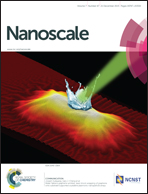Polarization state-based refractive index sensing with plasmonic nanostructures
Abstract
Spectral-based methods are often used for label-free biosensing. However, practical implementations with plasmonic nanostructures suffer from a broad line width caused by strong radiative and nonradiative losses, and the sensing performance characterized by figure of merit is poor for these spectral-based methods. This study provides a polarization state-based method using plasmonic nanostructures to improve the sensing performance. Instead of the intensity spectrum, the polarization state of the transmitted field is monitored to analyze variations of the surrounding medium. The polarization state of incidence is strongly modified due to the excitation of surface plasmons, and the ellipticity of the transmitted field changes dramatically around plasmon resonances. Sharp resonances with line widths down to sub-nanometer are achieved by plotting the spectra of the reciprocal of ellipticity. Therefore, the sensing performance can be significantly improved, and a theoretical value of the figure of merit exceeding 1700 is achieved by using the polarization state-based sensing approach.


 Please wait while we load your content...
Please wait while we load your content...